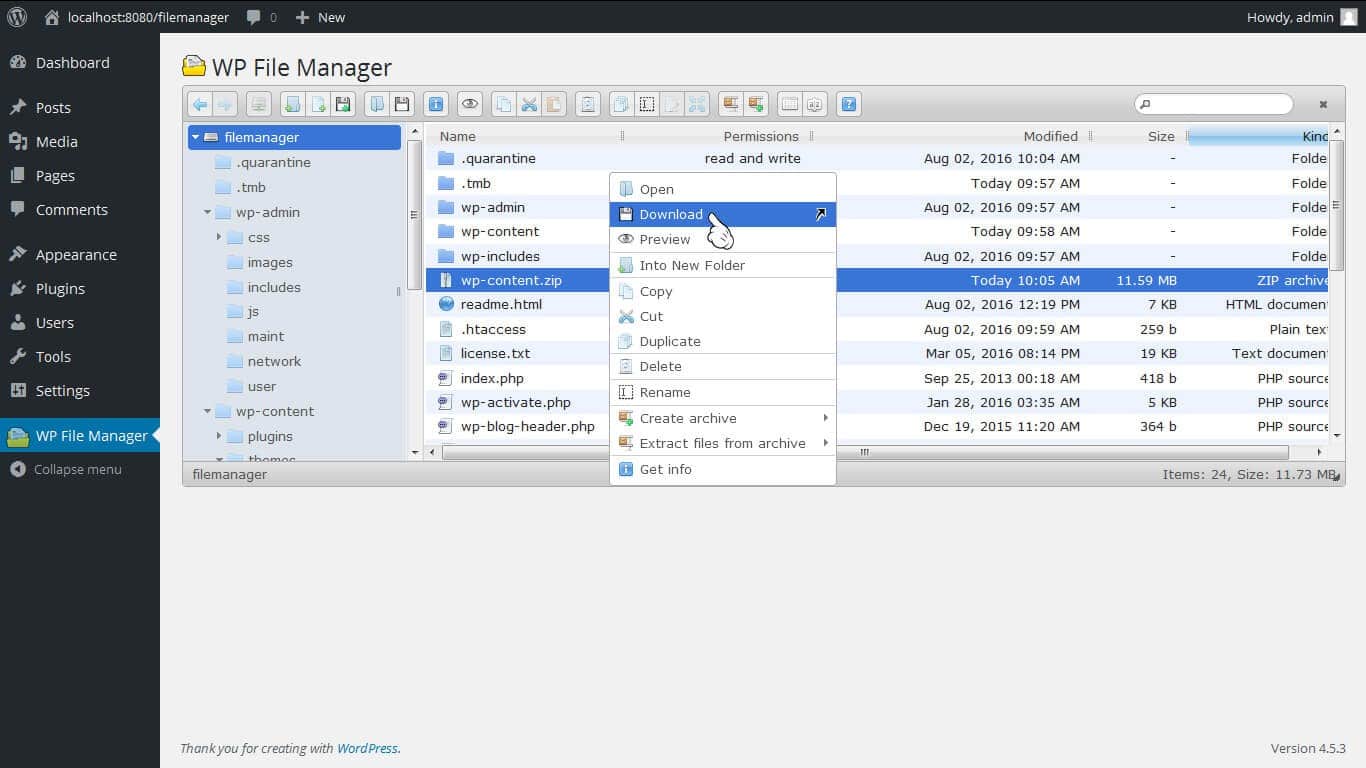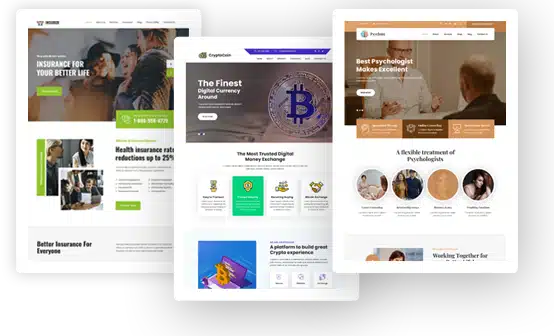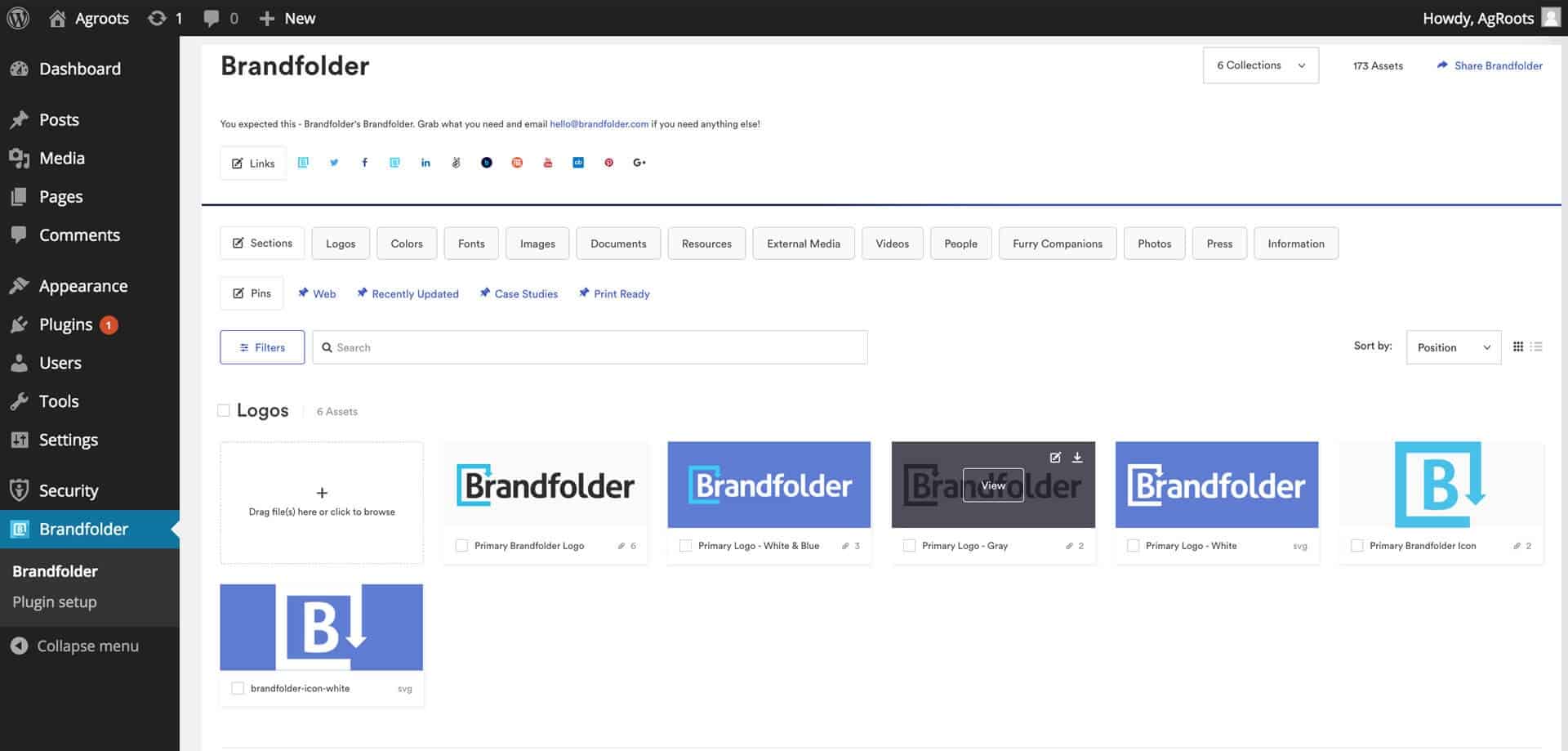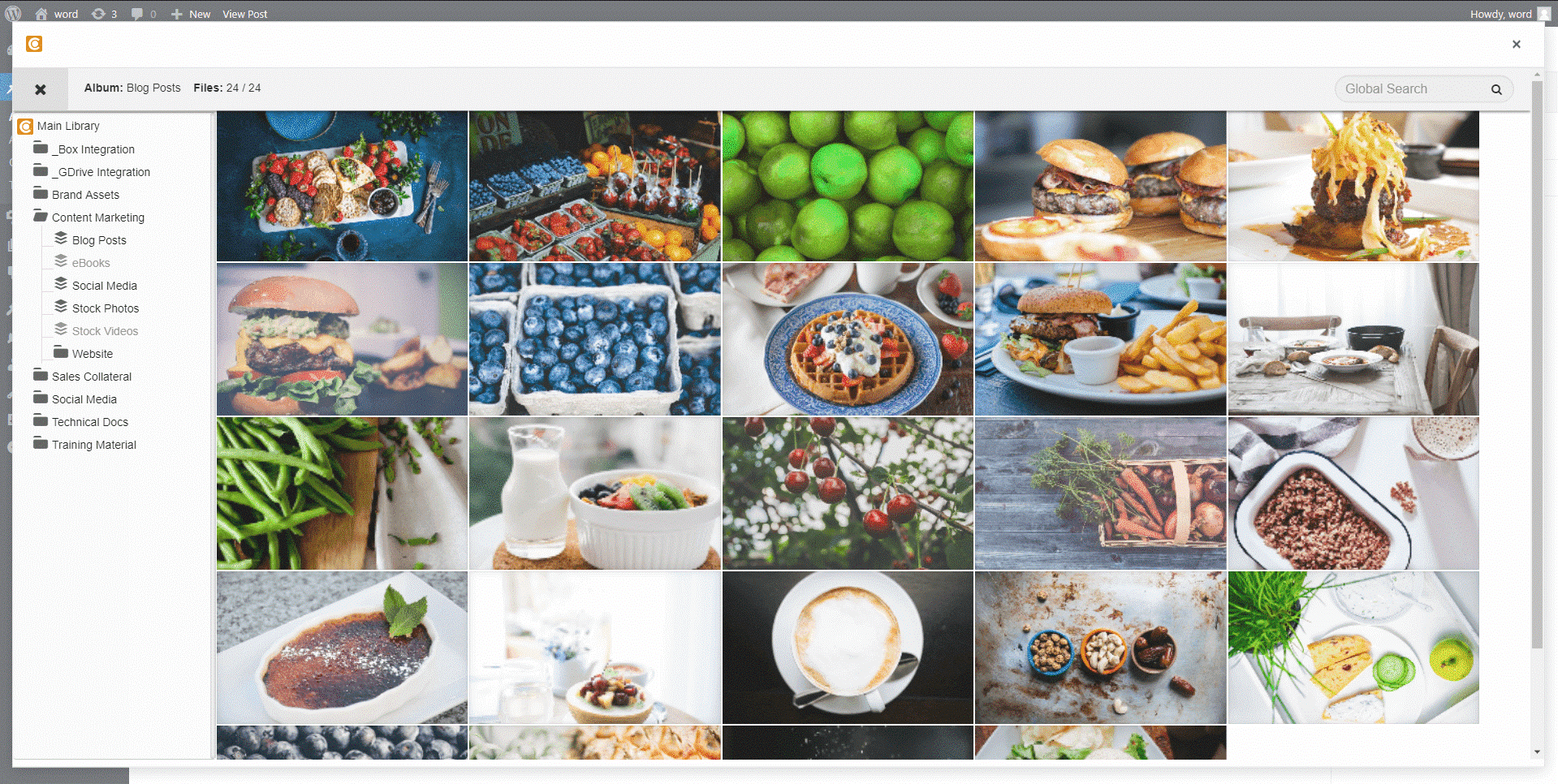An Easy Guide to WordPress Digital Asset Management with Top-Rated Plugins
While WordPress offers a robust content management system, it may not provide the optimal digital asset management (DAM) capabilities that you require. We understand that you’re looking for a tool that enables you to access and efficiently manage all your assets from one centralized location: your WordPress dashboard. So, we wrote this article for you.
We will explore the top-rated plugins for WordPress digital asset management with detailed information on plugin features, pros, and cons to help you make the best decision. Read also about Pics.io’s digital asset management tool
What You Need to Know About Digital Asset Management in WordPress
As a WordPress user, there are three primary ways you can store, organize and retrieve digital files within the WordPress interface:
- Using the WordPress media library. A basic built-in feature that automatically organizes all media files uploaded to your website into folders by year and month. You can access this through the “Media” tab in your WordPress admin dashboard and search or filter files based on the upload date, file name, or file type.
- Installing a DAM plugin. If you want a more customized digital asset management system that allows you to create custom folders, organize files using metadata, and search for files with enhanced filtering options, then you need to install a WordPress DAM plugin.
- Integrating third-party services. Similar to native WordPress plugins, there are cloud-based third-party services not listed in the WordPress plugin directory, but they provide extensive features for managing your assets. They integrate and sync files directly from an external DAM into the WordPress media library.
The built-in media library, while sufficient for basic digital asset management, has limited capabilities. The best way to access more advanced solutions within WordPress is to use a DAM plugin or integration that offers robust search features, proper cataloging, easy sharing, and asset protection. Additionally, integrating a file upload widget can further enhance the capabilities of your WordPress DAM solution, allowing seamless uploading and management of files within your media library.
How to Set Up WordPress Digital Asset Management
You can significantly streamline your media organization by implementing a WordPress DAM system using this simple approach:
- Choose your preferred DAM plugin. Depending on the type of digital assets you want to manage and the features you prioritize, research plugins or integrations and narrow down your choices. Read through reviews and use our list of the top recommended plugins to help you make an informed decision.
- Test the plugin. Before you fully commit to using a plugin, it’s a good idea to try out different options. Many plugins offer demo versions or free trials so you can test the functionalities for your specific use case.
- Install and Activate the plugin. From the sidebar in your WordPress dashboard, go to Plugins > Add New. Search for your selected plugin, then click “Install Now” and “Activate”. For businesses needing contract management solutions, the best e-signature for small business can be seamlessly integrated with WordPress to streamline your document workflows. If you choose to use an external integration, you’ll need to follow the documentation for that particular solution.
- Set up the plugin according to your requirements. After the plugin is activated, you will typically find configuring options such as folder structure, file organization, metadata, permissions, and file types. Adjust the settings to control access permissions and user roles, or restrict asset visibility. Make sure to read the plugin’s documentation to get detailed instructions on how to configure settings correctly.
- Start managing your digital assets. You can upload files, organize your assets into folders or categories, and add relevant metadata to your files which will help in searching and filtering assets later.
Setting up WordPress DAM may seem daunting at first, but it’s a relatively straightforward process. The hardest step is choosing a plugin that serves you well in the long run and enables efficient management of your growing digital asset repository. We’ll break down this step in the next section.
What to Consider When Choosing a WordPress DAM Plugin
When you need a robust solution for managing digital assets in WordPress, there is an overwhelming number of plugins and integrations to choose from. This creates a major problem: How do you critically evaluate each one and find the best option for you?
In this section, we’ll delve into the essential features that determine the effectiveness of a DAM plugin and you can use these criteria as a guide to help you make your final decision:
- Cataloging, collaboration, and sharing features. These are the core capabilities of a WordPress DAM plugin. Cataloging features such as asset categorization with taxonomies, creating custom metadata fields, and filtering options help you effortlessly categorize and retrieve your assets. Collaboration features such as permission management and version control facilitate teamwork while ensuring the secure and controlled distribution of digital assets.
- Compatibility and integrations. This is a crucial aspect to consider when evaluating a DAM plugin, ensuring seamless integration into your existing website or blog. It’s important to assess the user interface of the plugin, including its customization options, accessibility, integration with third-party tools, and any learning curve associated with its implementation.
- Ease of use and migration. The best-performing WordPress DAM plugins excel in both ease of use and migration features. They offer user-friendly interfaces that allow you to navigate and manage digital assets effortlessly. When it comes to migration, these plugins provide seamless import/export capabilities, making it easy to migrate your digital assets from other platforms to WordPress.
- Digital asset support and documentation. It’s essential to consider the types of digital assets supported by the plugin and any potential limitations on file sizes or formats. Also consider the availability and quality of technical support, documentation, and user communities that provide guidance and prompt resolution if any issues arise during usage.
- Security and asset protection. Some WordPress plugins are known to come with security risks, and when it comes to managing your digital assets, security is a top priority. A good DAM plugin should offer essential security features like SSL encryption, permissions management, backups, data encryption, user roles, and options to prevent unauthorized downloads.
- Performance and scalability. A DAM plugin that is not optimized for performance can slow down your website page speed and could even crash your servers. So it is important to check that the plugin can handle large volumes of digital assets and high traffic. Look out for features such as browser cache support, database optimization, and content delivery network (CDN) support.
- Pricing and licensing. WordPress DAM plugins typically have various pricing models. Some are free to use, but require a subscription or one-time payment to access premium features while others offer different licensing options for your site. Understanding the pricing structure of the plugin will help you choose a solution that fits your budget and avoid unexpected costs in the future.
5 Top Rated WordPress Digital Asset Management Plugins
These are some of the best-performing WordPress digital asset management plugins and integrations based on user reviews from the WordPress plugin directory and sites like G2, TrustRadius, and Capterra:
-
File Manager: 4.5* (1,249 reviews)

This is an open-source plugin that is built specifically for WordPress and can be downloaded from the WP plugin repository. It’s easy to use and suitable for beginners or experienced developers. With File Manager, you don’t need to rely on external FTP clients or file managers. Everything can be done conveniently within your WordPress admin panel.Key features:
- Multilingual file manager
- Built-in database manager
- Sharable links to files within File Manager
- Themes for customizing experience
- Secure access controls. This allows you to restrict permissions for specific files and folders based on user roles.
Pros:
- Compatible with all versions of WordPress
- User-friendly interface
- Compatible with multiple file types
- Integrates with cloud apps like Google Drive, Dropbox, and Slack (paid add-ons)
- Active support forum on WordPress
Cons:
- Advanced security features are only available in the premium version
- Users experienced a major security breach in 2020
Pricing:
- Free (with paid add-ons)
- Pro ($25 for 1 site)
- Developer ($99 for 10 sites)
Ratings:
- WordPress: 4.5* (1,249 Reviews)
-
Brandfolder: 4.5* (1,175 reviews)

Brandfolder is a WordPress plugin and cloud-based tool that provides a centralized repository for all your digital assets. It has a user-friendly interface and multiple options for filtering, tagging, and sorting. In G2’s Winter 2022 reports, Brandfolder ranked as the #1 DAM platform for two quarters in a row.Key features:
- Bulk editing to manage important taxonomy features
- AI tagging when uploading new assets or images and automatic grouping of duplicates.
- Monthly standardized reports on asset performance and user engagement
- Video streaming and embedding assets with smart CDN
- Version history tool for auditing regularly updated assets
- Built-in intrusion detection, text sanitization, and advanced privacy settings
Pros:
- It is rated a 9.1/10 on ease of setup, ease of use, and quality of support
- Seamlessly integrates with WordPress
- Supports multiple brand files and asset types
- Instantly-generated embed links for emails, blogs, and landing pages builders
- High-level security features
Cons:
- No mobile app or watermarking feature
- Search function is not always reliable
- Complex pricing structure and confusing sales demo process
Pricing:
- Free trial available
- Custom quote for premium and enterprise plans
Ratings:
- G2: 4.5* (1,175 reviews)
- Capterra: 4.7* (436 reviews)
-
Canto: 4.5* (656 reviews)

Canto facilitates the direct publishing of brand assets to WordPress sites, simplifies document collaboration, and provides tools to collect, manage, and share digital content seamlessly from any location. Canto was ranked #1 in G2 Crowd’s Spring 2022 Report out of 72 DAM platforms.Key features:
- AI-powered search to filter assets by keywords and metadata
- Multi-factor access control systems to ensure the security of digital assets
- Detailed reporting provides insights into the performance of digital content across its entire lifecycle
Pros:
- Easy to use
- Great customer service
- Facial recognition features for tagging and finding people
- Ability to manage and customize user portals
Cons:
- Too many add-ons with extra costs
- Cumbersome video file management
- Poor upload and download functionality
Pricing:
- Free trial
- Premium pricing is not provided
Ratings:
- G2: 4.3* (623 reviews)
- Capterra: 4.5* (656 reviews)
-
Acquia DAM (Widen): 4.5* (534 reviews)

Acquia DAM (Widen) is a flexible and versatile solution that allows assets stored on its server to be directly accessed and utilized within WordPress through seamless integration. It’s designed for medium-to-large businesses in various industries like manufacturing, consumer products, healthcare & medical tech, hospitality, education, and agencies.Key features:
- Enhanced filter options for image sorting
- Configurable metadata schema
- AI-powered auto-tagging
- Publishing workflow
Pros:
- High-quality support
- Quick start implementation that can have you up and running within two weeks
- Seamless content synchronization across systems
- Hi-resolution previews for a wide range of file formats including podcasts, music, sound effects, documents, RAW images, videos, and Adobe suite files
Cons:
- Limited customization options
- High cost and complexity
Pricing:
- Free trial
- Custom quote for 3 pricing editions (50 to 100,000 users per year)
Ratings:
- G2: 4.3* (623 reviews)
- Capterra: 4.4* (324 reviews)
-
Bynder: 4.5* (475 reviews)

According to The Forrester Wave Digital Asset Management for Customer Experience 2022 report, Bynder excels in user-friendliness and portal capabilities, making it a top choice. G2’s 2023 Grid Report also ranks it as the leading digital asset management provider.Key features:
- Asset Tracker to reference published assets back to Bynder
- Seamless integration with existing tech stack through pre-built tools and APIs
- Creative workflow to streamline content creation and collaboration processes with internal teams and external agencies
- Advanced analytics to get insights into asset usage and performance for effective KPI evaluation
Pros:
- Trusted by renowned brands like Puma, Spotify, TED, and Five Guys
- Easy sharing of multiple large files within your team or with external partners
- Robust collaboration features for seamless teamwork.
Cons:
- Expensive
- Some users reported occasional performance issues.
Pricing:
- Free trial
- Unlisted enterprise pricing
Ratings:
- G2: 4.5* (475 reviews)
Best Practices for Effectively Managing Digital Assets in WordPress
Managing digital assets in WordPress can be a challenging task, especially when dealing with a large number of files stored in multiple locations. To help optimize workflows, enhance security, and ensure efficient organization, here are some guidelines and best practices:
- Use a DAM plugin. Choose a solution that integrates seamlessly with WordPress, so that it simplifies the asset management process and does a lot of the heavy lifting for you.
- Create a folder structure. Use a logical system, such as sorting folders based on categories or projects, to organize your assets as this allows for easy navigation and retrieval.
- Use naming and metadata tagging conventions. Not inputting data correctly is a sign of bad data management. To significantly enhance searchability and improve the overall organization of your assets, it’s essential to use descriptive file names when uploading assets to your DAM and add metadata such as keywords, descriptions, and tags.
- Set up MFA and access controls. For the sake of security and privacy, use both Multi-Factor Authentication (MFA) and user controls to protect your digital assets and prevent unauthorized access to sensitive files.
- Back up your assets regularly. Have a backup system in place to safeguard your digital assets and ensures that you can easily retrieve your data.
- Maintain and update your WordPress. In addition to periodically giving your website a makeover, also review and update the DAM plugin to ensure new you have access to new features and bug fixes.
- Leverage the plugin’s documentation and community forums. If you run into any problems with your DAM plugin, consider referring to the plugin’s documentation or community forum before contacting support.
Here are some other WordPress maintenance tips to ensure your website is always in excellent condition.
Final Recommendations for Digital Asset Management in WordPress
As an online business, you need to keep up with digital trends. Investing in a WordPress-integrated DAM solution will help improve user experience and ensure that you can maintain a seamless omnichannel experience. It’s also a wise choice for your business if you have a growing digital asset library and want to access all your assets within the WordPress platform.
If you’re just getting started with WordPress, check out Grace Themes. Choose from various professional search-engine-optimized WordPress themes that are responsive and easy to set up.





